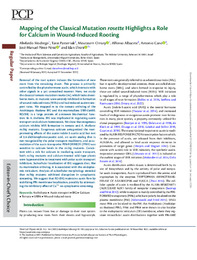Please use this identifier to cite or link to this item:
https://hdl.handle.net/11000/35299Full metadata record
| DC Field | Value | Language |
|---|---|---|
| dc.contributor.author | Modrego, Abelardo | - |
| dc.contributor.author | Pasternak, Taras | - |
| dc.contributor.author | Omary, Moutasem | - |
| dc.contributor.author | Albacete, Alfonso | - |
| dc.contributor.author | Cano, Antonio | - |
| dc.contributor.author | Pérez Pérez, José Manuel | - |
| dc.contributor.author | Efroni, Idan | - |
| dc.contributor.other | Departamentos de la UMH::Biología Aplicada | es_ES |
| dc.date.accessioned | 2025-01-26T10:01:45Z | - |
| dc.date.available | 2025-01-26T10:01:45Z | - |
| dc.date.created | 2023-02-02 | - |
| dc.identifier.citation | Plant and Cell Physiology, Volume 64, Issue 2, February 2023, Pages 152–164 | es_ES |
| dc.identifier.issn | 1471-9053 | - |
| dc.identifier.issn | 0032-0781 | - |
| dc.identifier.uri | https://hdl.handle.net/11000/35299 | - |
| dc.description.abstract | Removal of the root system induces the formation of new roots from the remaining shoot. This process is primarily controlled by the phytohormone auxin, which interacts with other signals in a yet unresolved manner. Here, we study the classical tomato mutation rosette (ro), which lacks shootborne roots. ro mutants were severely inhibited in formation of wound-induced roots (WiRs) and had reduced auxin transport rates. We mapped ro to the tomato ortholog of the Arabidopsis thaliana BIG and the mammalians UBR4/p600. RO/BIG is a large protein of unknown biochemical function. In A. thaliana, BIG was implicated in regulating auxin transport and calcium homeostasis. We show that exogenous calcium inhibits WiR formation in tomato and A. thaliana ro/big mutants. Exogenous calcium antagonized the rootpromoting effects of the auxin indole-3-acetic-acid but not of 2,4-dichlorophenoxyacetic acid, an auxin analog that is not recognized by the polar transport machinery, and accumulation of the auxin transporter PIN-FORMED1 (PIN1) was sensitive to calcium levels in the ro/big mutants. Consistent with a role for calcium in mediating auxin transport, both ro/big mutants and calcium-treated wild-type plants were hypersensitive to treatment with polar auxin transport inhibitors. Subcellular localization of BIG suggests that, like its mammalian ortholog, it is associated with the endoplasmic reticulum. Analysis of subcellular morphology revealed that ro/big mutants exhibited disruption in cytoplasmic streaming. We suggest that RO/BIG maintains auxin flow by stabilizing PIN membrane localization, possibly by attenuating the inhibitory effect of Ca2+ on cytoplasmic streaming. | es_ES |
| dc.format | application/pdf | es_ES |
| dc.format.extent | 13 | es_ES |
| dc.language.iso | eng | es_ES |
| dc.publisher | Oxford University Press | es_ES |
| dc.rights | info:eu-repo/semantics/openAccess | es_ES |
| dc.rights | Attribution-NonCommercial-NoDerivatives 4.0 Internacional | * |
| dc.rights.uri | http://creativecommons.org/licenses/by-nc-nd/4.0/ | * |
| dc.subject | Arabidopsis | es_ES |
| dc.subject | Auxin transport | es_ES |
| dc.subject | BIG | es_ES |
| dc.subject | Calcium | es_ES |
| dc.subject | Tomato | es_ES |
| dc.subject | UBR4 | es_ES |
| dc.subject | Wound-induced roots | es_ES |
| dc.subject.other | CDU::5 - Ciencias puras y naturales::57 - Biología | es_ES |
| dc.title | Mapping of the Classical Mutation rosette Highlights a Role for Calcium in Wound-induced Rooting | es_ES |
| dc.type | info:eu-repo/semantics/article | es_ES |
| dc.relation.publisherversion | 10.1093/pcp/pcac163 | es_ES |

View/Open:
pcac163.pdf
5,58 MB
Adobe PDF
Share:
.png)
